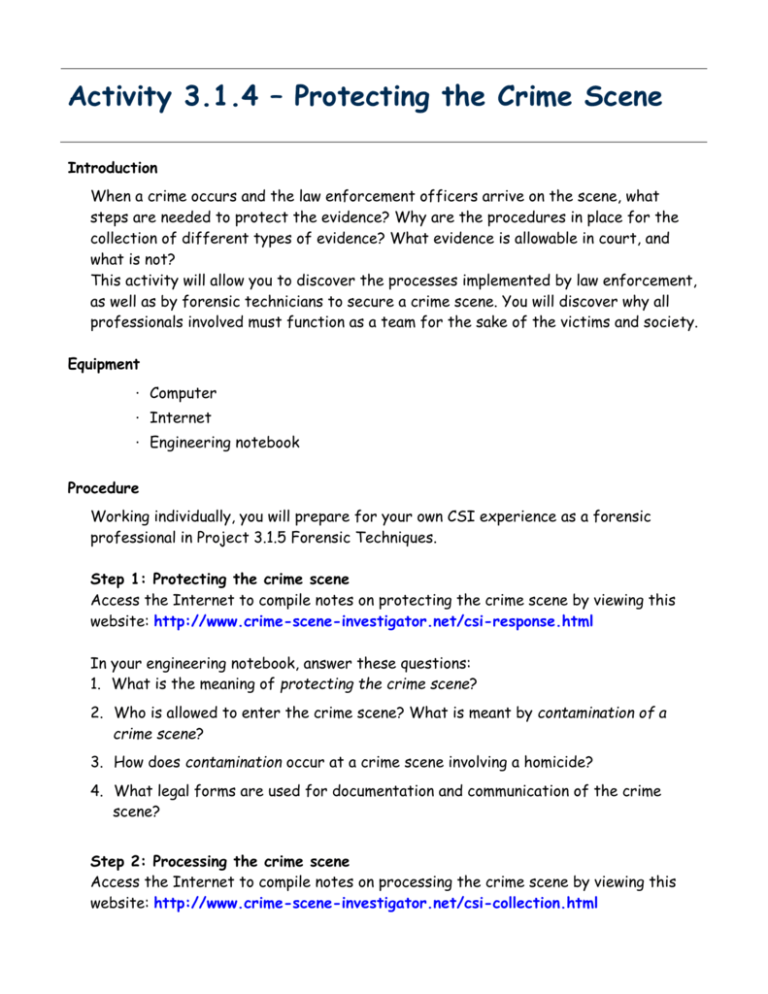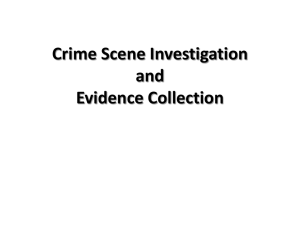Activity 3.1.4 – Protecting the Crime Scene
advertisement

Activity 3.1.4 – Protecting the Crime Scene Introduction When a crime occurs and the law enforcement officers arrive on the scene, what steps are needed to protect the evidence? Why are the procedures in place for the collection of different types of evidence? What evidence is allowable in court, and what is not? This activity will allow you to discover the processes implemented by law enforcement, as well as by forensic technicians to secure a crime scene. You will discover why all professionals involved must function as a team for the sake of the victims and society. Equipment · Computer · Internet · Engineering notebook Procedure Working individually, you will prepare for your own CSI experience as a forensic professional in Project 3.1.5 Forensic Techniques. Step 1: Protecting the crime scene Access the Internet to compile notes on protecting the crime scene by viewing this website: http://www.crime-scene-investigator.net/csi-response.html In your engineering notebook, answer these questions: 1. What is the meaning of protecting the crime scene? 2. Who is allowed to enter the crime scene? What is meant by contamination of a crime scene? 3. How does contamination occur at a crime scene involving a homicide? 4. What legal forms are used for documentation and communication of the crime scene? Step 2: Processing the crime scene Access the Internet to compile notes on processing the crime scene by viewing this website: http://www.crime-scene-investigator.net/csi-collection.html In your engineering notebook, answer these questions: 1. What are the steps involved in processing a crime scene? 2. What equipment and technology are used by professionals at the crime scene? 3. What role does each professional of the following play at the crime scene? a. b. c. d. e. f. g. h. Lead investigator Medical examiner Photographer Forensic technicians Law enforcement Paramedic Forensic artist Engineer Conclusion 1. What is processing a crime scene and how could it relate to an engineering design process? 2. What does it mean to reconstruct a crime scene? How is this process similar to 3D modeling used by an engineer? 3. What role does an engineer play in crime scene reconstruction? 4. How has engineering impacted the evolution of forensics and DNA collection? 5. What problem-solving skills are necessary for the reconstruction of crime scenes? 6. What areas of specialization for engineering are most needed in forensics? 7. Describe some challenges associated with protecting a crime scene located outside.








